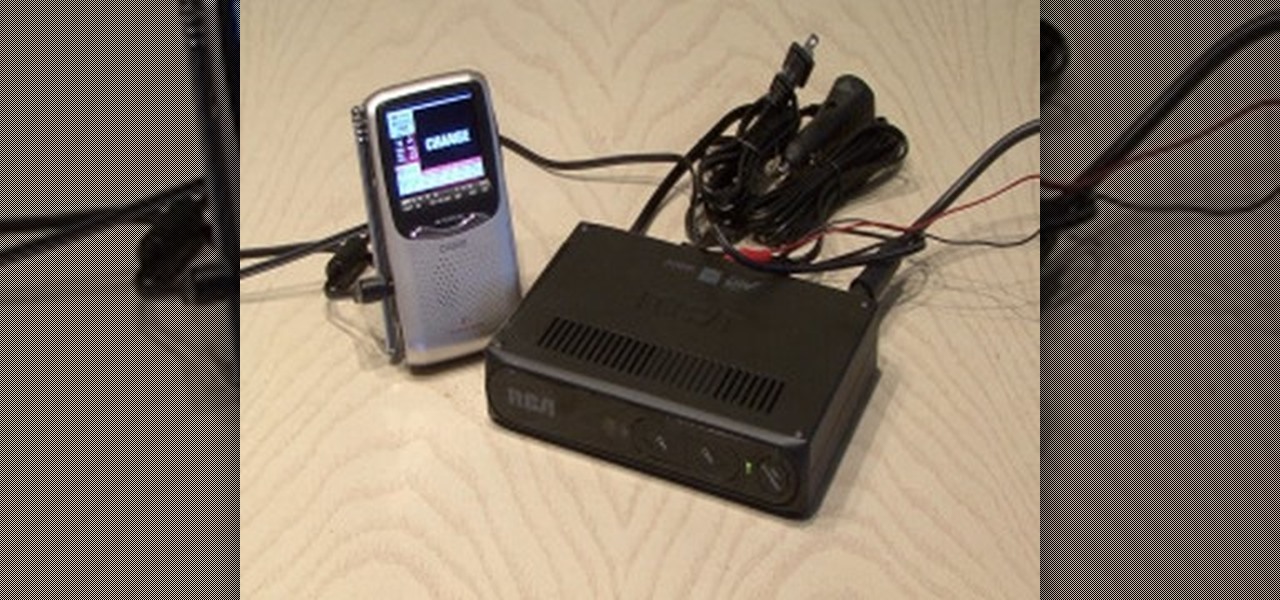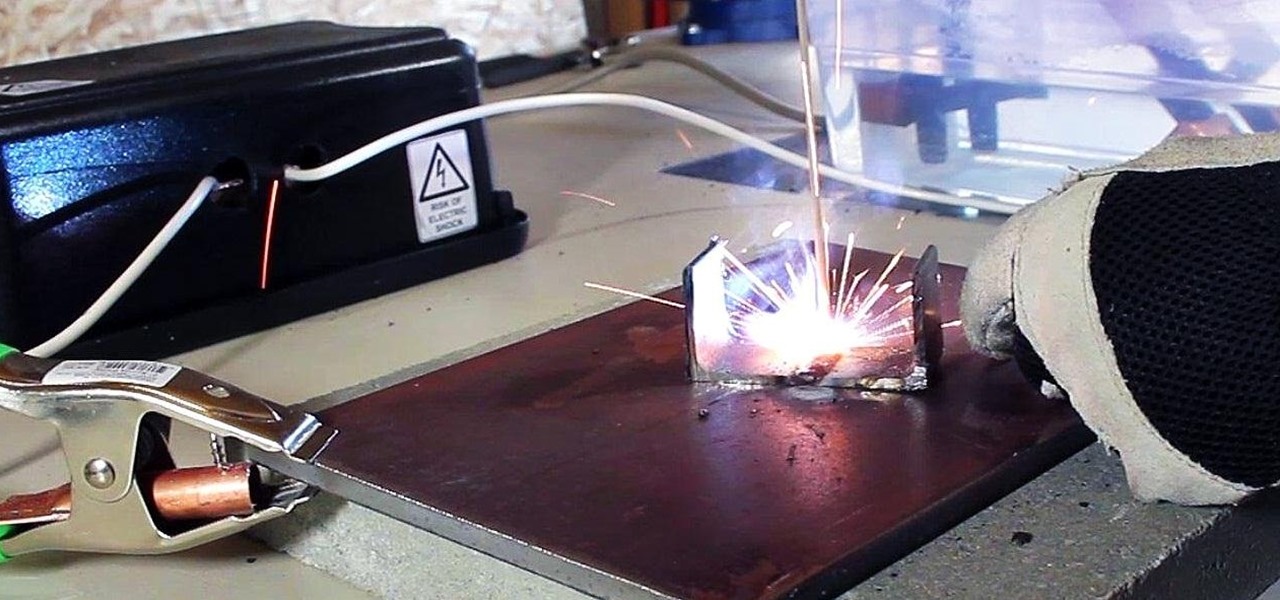Hot Hacks, Mods & Circuitry Posts


How To: Build a Cheap Arduino Tachometer to Measure the RPMs of Spinning Fans (And More)
A tachometer, or RPM counter, is a device that measures the speed of something that's rotating. In a car with a manual transmission, the tachometer can be helpful in determining when to release the clutch and how much gas to give when you're taking off. This DIY Arduino Tachometer by Chris on PyroElectro uses an infrared transmitter and receiver break-beam pair to measure the RPM of a computer fan. When the fan blade passes between the transmitter and receiver, the IR beam counts the interrup...

How To: Disguise Your Gaming Addiction with This DIY Coffee Table Arcade Machine
Love old-school games like Pac-Man and Space Invaders, but don't have the extra space for an arcade machine? Get the best of both worlds (and save some cash) with this DIY Arcade Coffee Table built by Sam Wang. He started with just an ordinary IKEA table and drawers, then cut out a space for an LCD monitor. The controls (including joysticks!) are mounted on the drawers so that when they close, it just looks like a normal coffee table. Once everything was in place, he added a glass table top, ...

DIY Portable Power Pack: Turn Your Backpack into a Solar-Powered Gadget Charger
A smartphone is pretty much useless with a dead battery. When you're out and about, it can be hard to find a place to plug in (if you remembered your charger, that is). But this DIY solar panel backpack made by electrical engineer Theodore Protasiewicz will help you use the scorching sun to your advantage and make sure that your gadgets are always ready to go. Theodore started with just a normal backpack, some solar panels, 18 gauge wire, and a USB port and hacked it into a traveling solar ch...

News: DIY Laser Tripwire System That Tweets Whenever Sharks Swim Past
If you've ever wished you could keep tabs on the fish in your aquarium, Justin of Antipasto Hardware Blog has just the mod for you! He created this DIY "shark detector" that sends out a tweet whenever Bruce the shark breaches a perimeter that he set up in the tank.

News: Artist Uses 300 Apples to Power 30 LEDs for 1 Electrified Fruit Battery Science Experiment
You've probably seen the classic fruit battery science experiment a thousand times, but I doubt you've ever seen it turned into an art project! Photographer Caleb Charland uses everyday objects like apples, coins and vinegar to create makeshift batteries, then takes these gorgeous long exposure photos. For the apple tree photo, Charland got about 5 volts for every 10 apples, so he had to wire 300 apples to power the lamp for several hours. He used a zinc-coated galvanized nail and copper wire...

How To: Be the 'Light' of the Party with This DIY Flashing LED Suit
If you've ever been on your way to a party and felt that your outfit just wasn't flashy enough, engineering student 'Rambo' has got just the thing for you. His homemade LED suit lights up and dances to the beat of the music, and can even be controlled via Bluetooth.

How To: Geekify Your Business Card with This Custom PCB Résumé Flash Drive
Whether you're job searching, networking, or just giving your information out to someone you just met at a bar, this circuit board business card made by Brian Carrigan will make sure no one ever forgets meeting you! Sure, you could buy a customized USB business card on some online shop, but if you're trying to emphasize your geek cred, why wouldn't you make your own PCB card from scratch? Carrigan used a USB controller and added an Atmel AT45DB series flash chip so that it could store his res...

How To: This DIY Baby Monitor Uses Lasers and a Wiimote to Detect Your Child's Breathing
Proud new papa Gjoci wanted to make sure he never had to worry about whether or not his baby girl was breathing, so he built this amazing breath-detecting baby monitor using a Wii remote, a printed circuit, and a laser. First, he opened up the Wiimote and took out the camera, then used an Atmel Atmega88 microcontroller to make a printed circuit. Low-power infrared lasers shine on the baby's clothing and the Wii camera detects the motion of the baby's breath, activating an alarm if the motion ...

How To: Ditch Your Doorbell for This Front Door RFID Lock That Lets Whoever You Want In (Whenever You Want)
Hate answering the door, but don't trust your friends with a set of keys? This RFID front door lock made by Steve Pomeroy will solve all your party-hosting problems. It reads the RFID tags in his friends' public transit cards and decides who's allowed in based on "groups" that Steve defines. And I have to say, it's also rather stylish. It's controlled by an Arduino serial console and a custom Android app to add and remove cards. The reader can store 50 or 100 tags at a time and allows 7 diffe...

How To: Turn a Playing Card into a Super Simple Solar-Powered Battery Charger
You can do a lot more with playing cards than you'd think, like turn them into gift boxes, fling them like throwing stars, and make them levitate or disappear. You can even make them recharge your batteries. Instructables user Shawn Frayne was sick of having a bunch of dead batteries lying around, so he developed a cheap and easy way to always have a charged one within arm's reach by turning a normal playing card into a super simple solar-powered battery charger for rechargeable AA and AAA ba...

How To: Make a Virtual Private Network
Stay secure on public wireless networks by making your own FREE virtual private network (VPN). This tutorial shows you how to set up an OpenVPN server and connect to it from your laptop.

How To: Make Your Own Propane-Fueled Cotton Candy Machine at Home
Cotton candy is a treat generally reserved for carnivals, fairs, and other events that don't come around often enough. Through some clever construction and about $45 in materials though, you can have all the sugary substance you could ever want with this awesome DIY cotton candy machine. All you'll need to construct your own are two dollar store stainless steel bowls, a fan motor, a few odd screws and bolts, a drill, and a propane torch. Check out the tutorial video below. As an added bonus, ...

How To: Make EXTREME LED Throwies
LED throwies are cheery glow-dots you can make in seconds from simple components and stick to any ferro-magnetic surface. But that's just the beginning — here's how to hack and modify them.

How To: DIY Pulsating Light Rod Speakers That Dance to Your Music
If you've found your speakers to be lacking in the visuals department, this is just the mod for you. Using 3" PVC, you can turn your speakers into light-up glow rods that pulse to the beat of your music. You'll need some electrical skills and experience soldering to get this one together, but otherwise it's not all that complicated. The main components you are going to need are speaker drivers, PVC pipes, LEDs, and the necessary cabling for those devices. The device works best with higher vol...

How To: Customize Your USB Keyboard with a DIY Illuminated Base with Built-In Phone Stand
I've never really liked to type on a flat or low keyboard. Even the small flip-up stands underneath most keyboards were not good enough for me, as those little legs aren't usually more than 2 or 3 centimeters high. I'd like a minimum of 5 cm, so I decided to make this keyboard base for myself. Aside from giving me the right height and angle, this DIY keyboard base also features LEDs that light up my monitor, the table, and gives a nice background to my desktop. It's even got a built-in stand ...

How To: Place Your Electrical Socket Safely in the Wall If It Was Pulled Out
Hello! This post is about the electrical socket. Imagine that somebody pulled the cable out of the possible protection outlet too fast? The result can be seen on the following photo. What to do next? Step 1: Preparation

How To: Make LEDs Dance to Techno Music
You must have seen some expensive mp3 players and CD players which have LEDs fixed on them and they dance to the tune looking really pretty.

News: Unencrypted Air Traffic Communications Allow Hackers to Track & Possibly Redirect Flights
Considering how often many of us fly on commercial airlines, the idea that a hacker could somehow interfere with the plane is a very scary thought. It doesn't help to learn that at Defcon, a researcher found that the Automatic Dependent Surveillance Broadcast (ADS-B), transmissions that planes use to communicate with airport towers are both unencrypted and unauthenticated.

News: Homemade Vinyl Cutter Turns Your Old Music CDs into Records
Even in the MP3 world, vinyl is still king among music lovers. Unfortunately, making your own record is nowhere near as simple as burning a compact disc or throwing some files onto an MP3 player. One clever inventor isn't letting that stop him though, putting together his own homemade vinyl cutter out of old parts. The end result—CD records!

News: LED Faucet Light
Video: .

How To: Hack a Mobile Phone to Work as a Detonator
You must have seen in movies, a person calls to another person and when the he picks up the phone, Boom! There is a bomb blast.

How To: Start a Fire with Your Water Bottle
If you're ever lost in a survival situation, here's a little trick you're going to be so glad to know. Normally, we'd think of using water to put OUT a fire, but in this video I show you how I use water to START THEM.

How To: Make a Functional Circuit—On Paper!
With this video tutorial from Household Hacker, you will learn how to make a functional circuit on paper. Really—on paper! See how to make an LED light up with a lead-based paper circuit and how to make a resistor on that circuit. It also shows how to make a flashlight out of one of these paper circuits, an LED, and a battery.

How To: Hide Secret Messages in Audio
If you want to send someone secret messages you have come to the right place. This is a way in which you can send secret messages to anyone without even making them get a clue that you have sent a secret message.

How To: Hack a Hard Drive into a Hidden Flash Drive, Cell Phone Charger & More!
Video: . Recycle your hard drive into a hidden flash memory device that only you know how to turn on and use in secret. This DIY hack project allows you to recycle your broken hard drives back to life and turn them into something useful.

News: Comic Book Instructions Make Arduino Hacking Easy
If you didn't think you could make a high speed photography trigger or hack together some creepy googly eyeballs for Halloween, then you've got another think coming, because learning how to use Arduino just got easier thanks to Jody Culkin and her wonderful comic book introduction to the Arduino platform (and electronics projects in general).

How To: Modify house clocks to run on solar power for five dollars
Power the clocks at your home with the sun! With a solar cell that costs around $5, you can convert a clock to solar power and avoid buying batteries or running up the electric bill. Instead, connect a rechargable battery to the solar panel with a few wires and some adhesive and soon you'll have enough energy to power your clock for as long as it lasts.

How To: Turn an Old Scanner into a Keyboard Light
Do-it-yourselfer Kipkay salvaged parts from an old parallel port scanner and made a flexible, super-bright light in this how-to video. The modification is done by extracting the lamp and running it through clear tubing. He mounted the new lamp above his keyboard for night typing. Watch this video tutorial and learn how to turn an old scanner into a keyboard light.

How To: Hack a toy radar gun into a real one
Turn a 'toy' radar gun into the real thing! Cops don't even have one like this! While this is a completely new and different design, the inspiration for this video is from an article by Ken Delahoussaye in MAKE Magazine. Just watch this video tutorial on how to hack a toy radar gun into a real one.

How To: Hack a megaphone into a bionic hearing spy device
Make a bionic hearing spy device by hacking a megaphone! Kipkay brings you this hack video on how to use a megaphone to spy on people. You can pull in conversations up to 100 feet away! Check out Kipkay hiding in a tree, spying on people. It also works through walls. That's how to make a bionic hearing spy device!

How To: Secretly record people with your own spy sunglasses
Hack a pair of sunglasses to secretly record audio and video and spend less than $40 in the process with this how-to video. To replicate this hack for yourself, you will need a spy camera and black solar shield sunglasses. For detailed, step-by-step instructions on building your own spy recorder sunglasses, watch this hacking how-to from Kip Kay of Make Magazine.

How To: Turn a flashlight into a laser
Kipkay demonstrates how to extract the laser from a DVD burner and mount it in a small flashlight to create a handheld laser burner that can light matches and burst balloons, all in this how-to video. All you need is a 16x DVD burner, a laser housing, and a flashlight. Watch this video tutorial and learn how to modify a flashlight into a relatively strong laser.

How To: Make a Blu-Ray Laser Phaser
Build your very own Trek-style Blu-Ray laser phaser with this hacker's how-to video from Kip Kay of Make Magazine. To replicate this hack at home, you'll need the following materials: (1) a PS3 Blu-Ray laser assembly (which can be had on eBay for roughly $45), (2) an original series-style Star Trek phaser gun (a good quality replica of which can be found for roughly $30), (3) a 9-volt battery, (4) a 9-volt battery snap, (5) a 150 Ohm resistor, and (5) a new switch to replace the phaser trigge...

How To: Make a motion triggered spy camera
Kip "Kipkay" Kedersha is known for his intriguing and clever how-to and prank videos, even when he teams up with MAKE Magazine. He will show you how to tweak, hack, mod, and bend any technology to your hacking needs. No electronic device, gadget, or household item can stand the test of Kipkay's hacks and mods.

How To: Mod a digital converter box into a battery powered one
Kip "Kipkay" Kedersha is known for his intriguing and clever how-to and prank videos, even when he teams up with MAKE Magazine. He will show you how to tweak, hack, mod, and bend any technology to your hacking needs. No electronic device, gadget, or household item can stand the test of Kipkay's hacks and mods.

How To: Make an exploding confetti cannon with Kipkay
Make a cool confetti cannon that's great for concerts, parties and special events! Kipkay demonstrates how to hack together this high powered cannon. Confetti bombs are super fun, pay attention to learn how to make your own confetti cannon.

How To: Make an infrared home alarm system
Kip "Kipkay" Kedersha is known for his intriguing and clever how-to and prank videos, even when he teams up with MAKE Magazine. He will show you how to tweak, hack, mod, and bend any technology to your hacking needs. No electronic device, gadget, or household item can stand the test of Kipkay's hacks and mods.

How To: Recharge a TV remote control's batteries with this solar power hack
If you're tired of replacing the batteries on your remote control and you would rather have the TV remote charge by itself, grab a few solar cells, rechargable batteries, and a few extra odds and ends. With this mod to your remote, you can let light charge your remote and never buy another battery for it again!

How To: Measure current, voltage, resistance, and continuity using a multimeter
If you own or have access to an auto-ranging or manual-ranging multimeter you can measure several different aspects of circuits, resistors, and the like. For example, you can determine the resistance, voltage, continuity, and current with the multimeter to help you determine the precision of a resistor. This guide will help you learn how to use a multimeter to perform these tasks.

News: Haptic Hacking Breathes New Life into Old Computer Mice
You've seen the felt mouse, which made computer clicking comfortable and chic, now brace yourself for something a little more interactive—DataBot.







